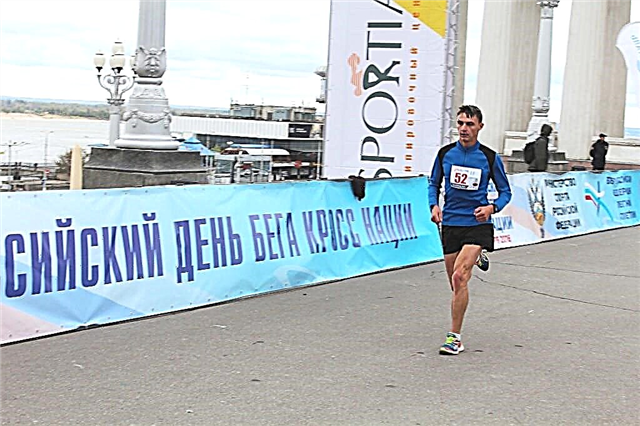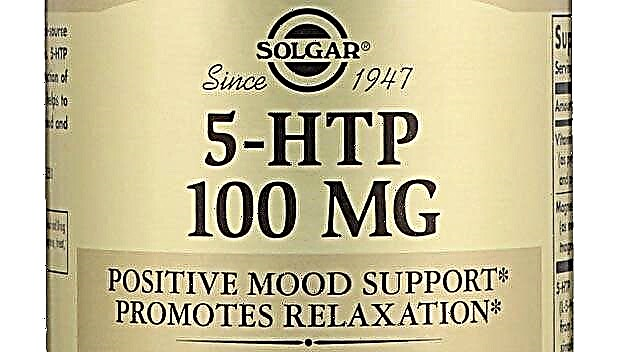Chondroitin is a drug (in the USA - dietary supplement), which belongs to the group of chondroprotectors. Its action is aimed at stimulating metabolic processes and cartilage restoration. The agent has an analgesic effect, fights inflammation in the joints. Chondroitin sulfate, the active ingredient of the supplement, is obtained from shark cartilage, trachea of cattle and pigs.
Forms of production and composition of supplements with chondroitin
In pharmacies you can find this remedy in the following forms:
| Release form | Capsules | Ointment | Gel |
| Packaging | - 3, 5 or 6 blisters of 10 pieces; - 5 blisters of 20 pieces; - 30, 50, 60 or 100 pieces in polymer cans. | - aluminum tube of 30 and 50 g; - a dark glass jar of 10, 15, 20, 25, 30 or 50 g. | - aluminum tube of 30 and 50 g; - glass jar 30 g each |
| Additional components | - calcium stearate; - lactose; - gelatin; - sodium lauryl sulfate; - propylparaben - dye E 171; - water. | - petroleum jelly; - dimexide; - lanolin; - water. | - orange or nerol oil; - lavender oil; - nipagin; - dimexide; - disodium edetate; - propylene glycol; - macrogol glyceryl hydroxystearate; - carbomer; - trolamine; - purified water. |
| Description | Gelatin capsules filled with powder or solid mass. | Yellow mass with a characteristic odor. | Transparent, has a recognizable odor, can be colorless or have a yellowish tint. |
Pharmachologic effect
Chondroitin sulfate is a polymeric glycosaminoglycan, a natural component of cartilage tissue. It is produced by them normally and is part of the synovial fluid.
The manufacturer claims that chondroitin sulfate has the following properties:
- Affects the production of hyaluronic acid, which in turn helps to strengthen ligaments, cartilage, tendons.
- Improves tissue nutrition.
- Stimulates the regeneration of cartilage, activates the synthesis of synovial fluid.
- Influences calcium deposition in bones, prevents calcium loss.
- Retains water in the cartilage, remaining there in the form of cavities, which improves shock absorption and reduces the negative effects of external influences. This, in turn, helps to strengthen the connective tissues.
- Has an analgesic effect.
- Relieves inflammation in the joints.
- Reduces the intensity of manifestations of osteochondrosis and arthrosis, prevents the progression of these diseases.
- Prevents the destruction of bone tissue.
- Stimulates metabolic processes involving phosphorus and calcium.
According to data from 7 studies conducted from 1998 to 2004, chondroitin does have the above actions. But in 2006, 2008 and 2010, new independent tests were carried out that refute all the previous ones.

Indications for appointment
- periodontal disease;
- osteochondrosis;
- deforming arthrosis;
- osteoporosis;
- fractures.
Chondroitin is prescribed as one of the components of the complex therapy of various pathologies of a degenerative nature that affect the joints, including the vertebral joints. In case of fractures, the drug promotes faster formation of callus.
For the prevention of joint pain, athletes take chondroitin when doing weightlifting. But independent clinical studies in recent years raise doubts about its effectiveness.
Contraindications
Chondroitin is not prescribed if the patient has an intolerance to the main substance or other components. Topical forms should not be used on damaged skin areas. The drug is prescribed with caution during the period of gestation and feeding of a child, as well as to young patients and adolescents (up to 18 years).
Contraindications to the appointment of Chondroitin for oral administration are:
- thrombophlebitis;
- lactase deficiency;
- lactose intolerance;
- predisposition to bleeding;
- malabsorption of glucose-galactose.
Method of administration and recommended dosages
The daily dose of the drug is 800-1200 mg. In the first three weeks, it is taken three times a day before meals with water. Then - twice a day. This dosage is relevant if a drug with a high concentration of the substance is prescribed, i.e. above 95%. Otherwise, you need to take an equivalently large dose of the drug, having previously consulted with your doctor. To achieve the desired result, the course of admission should be at least six months. At the end of the course, you need to take a break, then you can repeat it. The length of the break and the duration of subsequent courses will be recommended by the doctor.
- For the prevention of joint pain, bodybuilders and heavy athletes take chondroitin 800 mg per day, the course is 1 month, repeat it 2 times a year.
- With frequent sprains and pain in the joints, 1200 mg per day is prescribed, the course is 2 months, it is allowed to be repeated up to 3 times a year.
Topical forms of Chondroitin are applied to the skin over the affected joint twice or thrice a day. Massage the area of application well, rubbing in the mass until it is absorbed. The ointment is prescribed in a course of two to three weeks. The gel must be used from two weeks to two months. The duration of use is determined by the doctor.
It is worth noting that recent studies have proven the complete ineffectiveness of the drug in the form of ointments and gel, since the substance does not penetrate well through the skin.
Side effects
The drug has almost no side effects. When taken orally, negative reactions from the digestive tract can be observed: nausea, vomiting, diarrhea, indigestion. When applied topically, it is quite rare that signs of allergy appear in the form of rashes, redness, itching.
Overdose
An overdose of Chondroitin for topical use has not been recorded. When taken orally, large doses of the drug can provoke negative reactions from the gastrointestinal tract: nausea, abdominal pain, vomiting and diarrhea. With prolonged use of the drug in excess of the recommended dosage (from 3 g and above), a hemorrhagic rash may appear.
If symptoms of an overdose occur, it is recommended to take detoxification measures: rinse the stomach, take sorbing drugs and remedies to reduce the severity of symptoms. If the manifestations persist or are excessive, an ambulance should be called.
Sports nutrition or medicine?
In the United States, chondroitin is on the list of dietary supplements, although in 22 other countries, including Europe, it is a drug and its production is controlled. In America, on the contrary, there are no production standards for this product. There, only about 10% of all supplements called "Chondroitin" actually contain the main active ingredient in sufficient quantities. In Europe, chondroitin is of a higher quality, nevertheless its price in these countries is too high, therefore experts recommend giving preference to American supplements, not forgetting to pay attention to the composition. The fact is that when the concentration of chondroitin lags by 10-30%, dietary supplements are two or even three times cheaper.
Special instructions
Taking the drug does not affect the reaction rate, ability to concentrate and control complex machines.
Chondroitin should be applied in the form of an ointment or gel only to intact skin areas (there are no scratches, wounds, abrasions, suppuration, ulceration).
If you accidentally stain your clothes or any surfaces with gel, they are easily washed off with plain water.
Application for children
There is no data on the safety of the drug for oral administration in persons under 18 years of age; therefore, it is not recommended. Topical forms can be used to treat children, but only as directed and under the supervision of a physician.
Application during pregnancy
There are no data on the safety of taking or external use of the drug during pregnancy and lactation. Taking Chondroitin inside is contraindicated. According to the doctor's prescription, the capsules can be taken during feeding, but the child in this case is transferred to artificial nutrition.
Topical remedies with chondroitin can cause side effects. Therefore, a pregnant or lactating mother can only be prescribed by the attending physician, assessing the possible risks.
Interaction with other drugs
Anti-inflammatory drugs are usually prescribed together with chondroprotectors. These can be either NSAIDs or corticosteroids. Chondroitin combines well with all medicines of a similar action.
If the patient is taking antiplatelet drugs, drugs that reduce blood clotting, or medicines to dissolve blood clots, it should be borne in mind that chondroitin can enhance the effect of such drugs. If a joint reception is necessary, then the patient is recommended to prescribe a coagulogram more often to control the level of blood coagulation.
Gel and ointment can be used with any drug, as there are no data on any interactions.
Chondroitin's analogs
Today, there are many products with chondroitin on the pharmacological market:
- solution for intramuscular administration of Mucosat;
- lyophilisate for the preparation of a solution for intramuscular administration of Artradol;
- ARTPA Chondroitin capsules;
- Chondroitin AKOS capsules;
- Artrafic ointment;
- solution for intramuscular administration of Chondrogard;
- Arthrin ointment;
- capsules Structum;
- tablets Cartilag Vitrum;
- lyophilisate for the preparation of a solution for intramuscular administration of Chondrolone.
Storage rules, conditions for dispensing from the pharmacy and prices
Chondroitin is a free over-the-counter drug.
The product should be stored in a place with normal humidity, out of direct sunlight.
Capsules and gel - at room temperature (up to +25 degrees), it is better to keep the ointment in the refrigerator, since you need a temperature not exceeding +20 degrees. The latter can be used within 3 years from the date of manufacture, gel and capsules - 2 years (with intact original packaging).
Chondroitin gel and ointment can be purchased at a pharmacy for about 100 rubles. Capsules are somewhat more expensive, a package of 50 pieces costs from 285 to 360 rubles.









